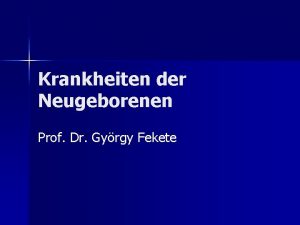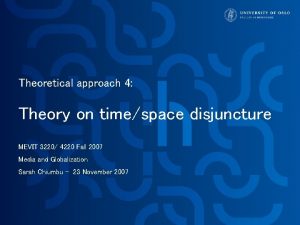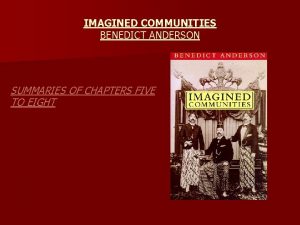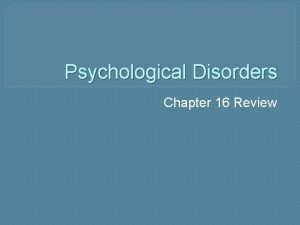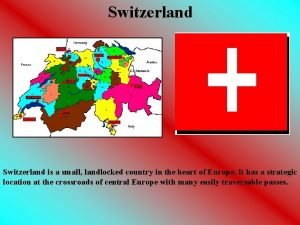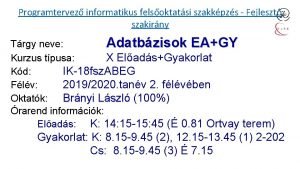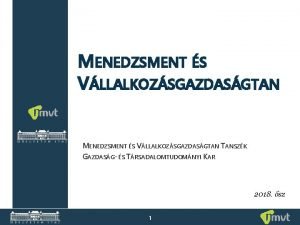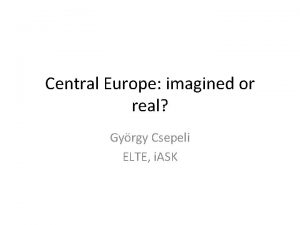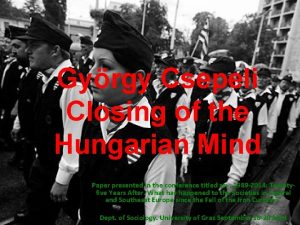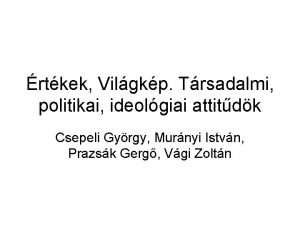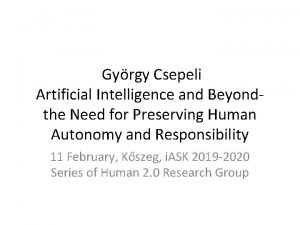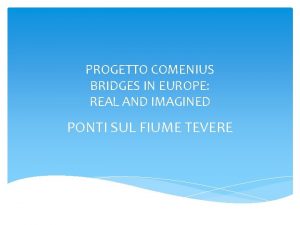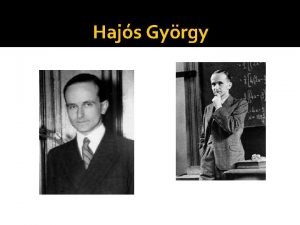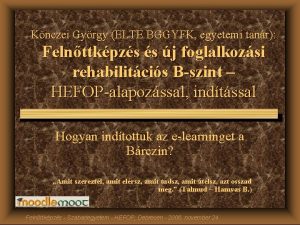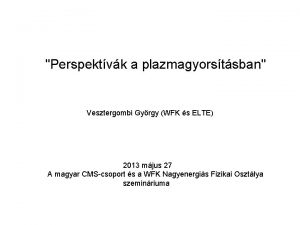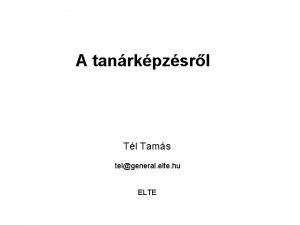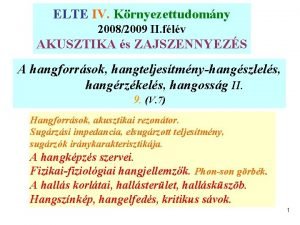Central Europe imagined or real Gyrgy Csepeli ELTE















- Slides: 15

Central Europe: imagined or real? György Csepeli ELTE, i. ASK


Does Central Europe exist? • Central Europe is synonymous with Mitteleuropa, a concept of Friedrich Neumann conceived during the First World War • Central Europe was born in Habsburg Empire, refers to the Austro-Hungarian Monarchy • Geographically the area between the Baltic and Adriatic Sea • The member states of the „Visegrad four”

Three historical regions of Europe • Split of the Roman Empire • Western Part (Rome)-Occidens • Eastern Part (Byzantium)-Orient • (Jenő Szűcs, Julianna Parti, 1983. The Three Historical Regions of Europe: An Outline. Acta Historica Academiae Scientiarum Hungariacae, vol. 29. No. 2/4. pp. 131 -184

Occidens • Carolingian Empire, Western model ( „narrow circles of freedom) • The Eastern Border around 800 AD: the line running southwards across Europe from the lower course of the Elbe-Saale, along the Leitha ( This was exactly the line that divided Europe into two „camps” in 1945. Is as if Stalin, Churchill and Roosevelt have studied the age of Charlemagne befor letting the Iron Curtain to fall

Orient • Byzantinum’s intention was to defend the heritage of Romans against the Barbarians by maintaining a defensive rigidity. • Byzantinum continued Rome’s centralized. bureaucratic state structure, no freedom for indidividuals and their communities • The workings of medieval Europe remained incomplete in this region. The overwhelming majority of this region was to become Russia

Temporary Expansion of the West into East • Between 1000 and • astern Carpathians and further north reaching the Baltic regions. This expanded West included Scandinavia as well • This border can be illustrated by the presence or lack of presence of Romanesque, Gothic and Renessaince buildings

Lviv (border city)

Withdrawal • After 1500 the eastern border of the late Carolingian Empire was to become a border again separating Western and Eastern Europe • Western Europe lost its medieval extension • A new region has emerged inserted between the original Western and Eastern regions of Europe • This area is Central Europe

Structural differences between West and East West From the bottom Local autonomy Personal autonomy Entrepreneurship Civic society Civic rights Urbanization Industralization Perpetual growth East From the top Centralizaton Authority Bureaucratic career State Privileges State settlements Agrarian society Stop and go

Two cultures Culture of credit Trust Pride Tax Empathy Pro-capitalism Citizen Rule of law Culture of levy Distrust Complain Tax evasion Envy Anti-capitalism Subject Autorithy makes law

Central Europe • Mix of the two structures • Mix of the two cultures • Dualisms (coexistence of feudal and capitalist segments of the society) • The clash of traditionalism and modernity • „Alienization” of modernity (Anti-Semitism) • Self-orientalization of „traditionalism” • Lack of sovereignity, legacy of imperial repression

Three clusters of Europeans (2008) • Secondary analysis of the results of the European Social Survey • Active, autonomous, citizens (38 %) (black) • Passive, submissive, subjects (37 %) • Rebels (25 %)

The persistence of the past

Future scenarios • Exclusion from Western Europe (isolation) • Inclusion into Western Europe (shared crisis) • Bridgeing between East and West
 Gyrgy
Gyrgy Caput succedaneum vs kephalhämatom
Caput succedaneum vs kephalhämatom Imagined community examples
Imagined community examples Benedict arnold imagined communities
Benedict arnold imagined communities Anderson imagined communities summary
Anderson imagined communities summary Heterostomia
Heterostomia Process of striving toward ideal functioning
Process of striving toward ideal functioning Is switzerland landlocked?
Is switzerland landlocked? Canvas elte login
Canvas elte login De ik szakmai gyakorlat
De ik szakmai gyakorlat Branyi elte
Branyi elte Progalap
Progalap Programozási alapismeretek
Programozási alapismeretek A modern fizika születése
A modern fizika születése Erdei jános bme
Erdei jános bme Elte seas library
Elte seas library
